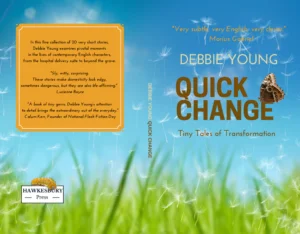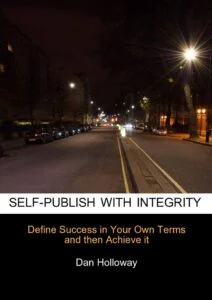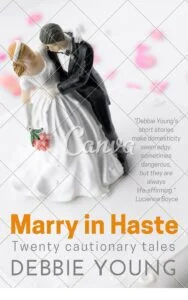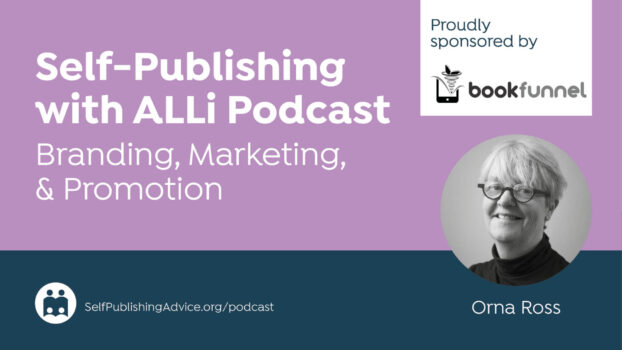One of the pieces of advice most frequently given to indie authors is to invest in a professional cover design. Here are some top tips to help self-published authors produce professional looking covers for free, when paid covers are not an option.
Good Reasons Not to Invest in a Paid-For Book Cover
Firstly, not everyone can afford to do this straight off. Some indie authors don't have to worry about profit-and-loss, and are happy to fund their writing as readily as they might a golf or tennis hobby, but many simply don't have the funds.
Many of those who do have the funds may be reluctant to splash out on paid covers if their expected sales don't cost-justify the investment. If you're an established author confident of selling plenty of copies, it's easier to “speculate to accumulate”, but for first-timers it's a bigger risk. Once they've made enough sales, they may invest in professional design services, and switch covers. Although that's a little chicken-and-egg, because better covers are likely to sell more books, it's a commendably business-like attitude.
Not all books justify such investment, e.g. one aimed at such a narrow audience that, even if it saturated its market, would not turn sufficient profit. Books aimed at raising funds for charity, produced on a shoestring, are in a similar position.
A final example of when not to invest in a paid cover design comes from a conversation I had with a professional book designer during Indie ReCon:
“If you're publishing a book as a favour for a friend, and you know the content is never going to be first rate, then the cover shouldn't give the false impression that it's going to be a five-star read – otherwise you raise the reader's hopes falsely and end up with disappointed reviews.”
That last point might seem at odds with ALLi's consistent advice to make your book the best it can be, but I appreciated his candour, insight and realism.
Some Free Book Cover Services to Consider
So, how do you get a professional-looking cover for free? That's not, as you might fear, a contradiction in terms, nor is it a hint to book designers to offer their services at no charge (though some services, where you buy completed custom designs for a few dollars, come close to that). There are several solutions that I know of already, and if you have more suggestions that you'd used to good effect, I'd love to hear them – please share them via the comments box.
1) Amazon
Amazon's two publishing platforms, KDP for Kindle books and CreateSpace for paperbacks, both offer you limited facilities for creating a cover using their free templates. There is a reasonable range of designs and colour schemes, with suggested placements for the text, plus a supply of stock photos or the option to upload your own. The particular advantage of using these templates is that they're great for the technically under-confident, in that you know they will turn out at the right size! I experimented with these in my early days as a self-published author, and particularly liked the one that is reminiscent of Penguin Classics, as used by Dan Holloway in the image here.
2) Canva

A striking cover for a single short story, unlikely to be a huge seller, but worth the $1 I paid for it, at least!
Karen Lotter tipped me off about Canva, which can be used for designing much more than book covers. Many authors use it for marketing materials such as social media and website headers. It's free to access, easy to use, with a super-simple tutorial in short, digestible chunks, and comes with a mass of templates in predetermined sizes, or the option to set your own dimensions. It includes a large stock of graphics, cartoons and photos. Many of the basic design elements are free, and again you can upload your own photos, or use stock images provided on the Canva website. You can download your covers as jpegs or pdfs (you'll need the latter to upload to Createspace, IngramSpark, etc).
The paid-for images cost only $1 per download – so if you are creating an ebook cover and a paperback cover using the same image, you'll pay that $1 twice over. Each time you download the image, you pay the $1 per image – but you can also download a free watermarked version, as I did here (see right), if you want to test out your cover idea on beta readers before you commit to the final design. I should note that there is small print that requires you to pay a higher fee once you've sold more than 1,000 copies of the book, but at that point, most authors would be happy to do that, I'm sure.
3) Ready-Made Book Covers
I've never used these, but independent websites (i.e. not associated with specific publishing platforms) were suggested in ALLi's Facebook forum and commended by several members. These are exactly how they sound: ready-made designs complete with images, set up to suit various genres. All you do is plug in your author name and title. Of course, there is a risk that someone else will use exactly the same design as yours – but you can take comfort from the fact that with so many publishers (trade as well as indie) using stock photos, there are sometimes incidents where even really expensive covers crop up using exactly the same pictures. As I haven't used one of these sites myself, I'm wary of recommending any specific ones, but a Google search will bring up a selection.
Moving Up to a Paid-For Book Cover
Using any free book cover option, it really does help if you have an eye for design, even if you have no experience of it. If you're stuck for what would look right, check out other books in your genre and try to emulate those you like best, without actually copying them (it's illegal to copy too closely, as it could be mistaken for “passing off” your work for another more popular author's.)
Remember that if you start out with a free book cover, you're not stuck with it forever: you can aspire to sell enough copies to afford a professionally-designed replacement. There's no shame in changing a cover – in fact, plenty of publishers do it frequently, even for top-selling authors, in order to keep abreast of book design trends in different genres.
To select a great professional designer for your self-published book, you will do well to check out ALLi's Partner Members who are book designers, many of whom offer discounts, deals and preferential treatment for ALLi members.
Do you have a preferred method for producing free book covers – or any cautionary tales to share? Please feel free to join the conversation via the comments box!
For more information on how to find the perfect book cover, see ALLi's Ultimate Guide to Finding the Perfect Book Cover








Hi Debbie,
Excellent article! We’ve just opened our book cover design service, http://www.bookcoverzone.com – I think it’s a fairly new approach to book cover designing and we would be honored if you could have a look and maybe suggest our site on your page as well. We work hard to become a go-to address whenever an author is in need of a cover.
Debbie’s on hols, Martin, so I’m stepping in. The best way to see if your service is a good fit for ALLi is to apply for Partner Membership: https://www.allianceindependentauthors.org/partner-members/
[…] create the cover, I used Canva recommended on Debbie Young’s blog (here). After a bit of a learning curve, I found it could do everything I needed and I’ve managed to […]
As a postscript to my article, I’m very pleased to report that one of the free book covers that I created myself (not one of those pictured in the article, but my Christmas short story collection, “Stocking Fillers”) has just been selected from hundreds of entries for a shortlist of twenty for CompletelyNovel’s “Lord of the Book Covers” competition. That is a great endorsement that home-made book covers, when done well, can reach professional standards. You can see all 20 covers in the shortlist here on the competition’s voting page (the finalist will depend on reader votes): https://selfpublishingadvice.org/production-how-to-make-a-free-book-cover/
I’d like to point out that not all great graphic design is out of the budget of self-published authors. For instance, although I usually do higher budget work, I have done several book design projects working with under-budgeted works by small publishers. I take on that work because it is often quite enjoyable — what greater joy is there than helping an author visually express their written idea in an eye-catching and thought-provoking way?
It is fair and correct to say that most professional graphic designers don’t take on that type of work, strictly due to budget, but I occasionally do. I take it on specifically when the author trusts me to deliver a design that articulates feeling. Yes, there are time restrictions on low budget projects, yet it is entirely possible to yield a great cover on a shoestring budget. You can see examples of that in my work.
I’m sure there are other designers like me, who take on work that presents a great challenge even though it pays little. We can’t do it for all of our projects, of course, but why not ask?
A professionally designed book cover can truly make the difference between your book getting noticed or passed right by. I even design the interior for some books, making them easier and more enjoyable to read.
Taking the risk of asking for a cut rate design is smarter that taking the risk of covering your well-crafted story with a poor cover. Just go in with the notions of trust and flexibility. If you balance budget with expectations, you can be pleased with the outcome. I would bet that nearly anyone who tries working with a professional designer will be infinitely happier with their book.
I hope this doesn’t read like an advert (I am also a writer investigating publishing options), because the truth is that if you want your book to be noticed, there is no faster way to achieve that than by adorning its cover with something that connects. It is quite similar to a woman who puts on a beautiful dress (and makeup, I suppose) or a man in a well-tailored suit. People are going to take notice, and are far more likely to engage.
[fixed my web address, so you can see what I’m talking about.]
Kelly, thanks for your long and thoughtful comment – I completely agree that it’s worth asking for a special rate (and worth noting also that ALLi has many partner members who are designers offering special rates to ALLi members – maybe you’d like to join us, Kelly, if you’re not already a member? It would be great to have you on board – you’ll find joining details at http://www.allianceindependentauthors.org). I can vouch for your suggested approach working, having used it myself when I wanted a professional cover produced for a book I had written to raise money for a charity – SilverWood Books very kindly gave their services for free because it was a charity they were keen to support, and they are a very generous and kind company!
I love your analogy to the well-dress man or woman, by the way! 🙂
This whole subject is fraught with issues because ‘art’ is so subjective. I have the impression that unless someone has a reasonably well-developed sense of aesthetics, combined with an understanding of what catches a reader’s eye, no matter which route is taken, there may always be the question, ‘Is it good enough?’ I certainly think that unless someone has reasonably good graphics software and these skills, it’s better to find a cover designer who seems to have them, based on examples of their work, and who will charge a reasonable price – as well as be willing to make revisions if required.
There are also various technical issues relating particularly to print formats which need to be dealt with, and these are:
* What you see on the screen has to be good, but will not necessarily be quite the same when printed. This is due to the difference between screen colour, in RGB, and print, in CMYK. Some colours, e.g. greens and blues, will vary more between RGB and CMYK than others. Tones can vary enormously too, and even the layout can look better on screen than in print, so the skill is in finding a design that looks good in both formats, which isn’t always easy, e.g. something that looks quite bright on the screen can end up looking quite dark/dull when printed.
This means it’s essential to get a test print from a commercial printer, just to make sure the overall design works. Note that the colours on home printers may or may not end up looking the same as those from a commercial printer, and colours will also vary from printer brand to brand, and even from printer company to company, depending on how they maintain their printers.
Since print and screen appearances will vary from screen to screen and from printer to printer, the artwork and its colours need to be ‘robust’ enough for this not to matter. From this point of view, pastels can often be a better choice than stronger, darker colours (depending upon the design, of course).
* The cover design may need to be uploaded to a variety of websites, or sent to a variety of printers. Each of these may have different spine width requirements, due to the weight of paper (gsm, or pounds per square inch) they use for both the interior and the cover. The entire cover will also need a ‘bleed’ amount, e.g. 3mm, which will usually vary from website to website/printer to printer.
* Different websites/printers allow for varying margins of error when producing a book, e.g. anything from 2mm to 5mm out of centre. This means the design needs to work when centred or out of centre. This also impacts on spine lettering, so a reasonable margin for error needs to be allowed during placement.
* Anything you want to be white, needs to be ‘pure’ white, and anything that needs to be black, should be ‘pure’ black. This particularly applies to the barcode. Some printers use these as references for other colours, so if the whites and blacks are not ‘pure’, other colours may be altered.
One thing that could be done as a learning exercise is to go to a public library and choose a number of books with covers you really like, then borrow the books and try to analyse why you like the covers. If you’re unable to analyse them in this way, then it’s highly unlikely that you could design a suitable cover yourself – although not impossible, of course 🙂
I learnt all this the hard way, although at least had the advantage of an IT background, Photoshop and the relevant skills to use it, and a fair amount of experience with digital art – still made errors along the way, though, but got there eventually, which was satisfying – would have hated to pay someone to create a cover for me, but I think that since cover design really is so important, I’d rather have paid for a good result than have been miserable because I’d made a total hash of it.
By the way, there’s nothing wrong with paying for stock art, as long as you pay a relatively small one-off fee for the right to modify it and to use it commercially, then make significant modifications so the end result doesn’t look like it came straight off a website. A good website for stock art is Fotolia, where I paid very little for all these rights and found a wonderful photo that I used for my second novel, with lots of modifications, as mentioned. Other books, I’ve used my own photos, or used a supplied photo and modified it for the author.
Inge, thank you so much for sharing this comprehensive advice drawing on your own experience – worthy of a blog post in its own right. Your thoughtful comments will be much appreciated by our readers, I’m sure. Thank you for taking the time to share so much detail.
Debbie–
I’m sure you know that fifty percent of what leads people to pick up (or click on) a book and eventually buy it is the cover. People who don’t see their writing as a hobby like golf or curling or whatever are exactly the ones who need to find the money for a professionally designed cover. That’s just the way it is. Others probably do better to use a template, or a personal photo.
Yep, you’re right, Barry – the importance of the cover should not be underestimated.
But with the best will in the world, there are many people who are keen to self-publish who simply cannot afford to pay designer fees. They might be out of work or living below the poverty line, using food banks, and doing all their online stuff in public libraries because they can’t afford the internet at home or don’t have a computer. I’m afraid that’s the way it is, too.
One of the many great things about self-publishing is that it democratises the process. Aspiring authors and poets may still be starving in the apocryphal garret, but at least they can get their ebooks out into the public at no up-front cost to themselves!
Few authors would disagree with you, Barry, that a professionally designed cover is desirable and ideal, but there are plenty who would be out of the game if the only way they could publish was by paying for one. There are also plenty of authors who start out with free covers who go on to invest their first royalties in upgrading to a paid cover. 🙂
Thanks for a great article and all the additional ideas in the comments. I contracted and worked closely with a graphic designer for my first book. Love how it turned out, and she’s done other marketing pieces for me. Given the costs, I’m now considering additional options as I plan my next project.
Sounds like you’ve found a gem there, Katy – thanks for sharing your success story there!
I can create a fine cover with Create Space’s cover creator which works fine on ebooks, but in trade paperbacks, the result is unprofessional not because of the front and back, but because of the spine. It is OK (not great) on books of 200 page, but on thicker books it is amateurish. I would not pull it off the shelf if I were a shopper simply because the spine shouts “On the Cheap!’
Good point to raise, Linda – the spine is often just as important as the cover, though it gets talked about far less often. We’re going to have a post coming up soon focusing specifically on book spines 🙂
This could not have come at a better time :-). I just finished planning the second book of my historical mystery series and I want to make a cover to put up on my website and needed some further tips on how to enhance the ideas I already have.
Tam
Glad to be of timely assistance, Tam – good luck with your second book! An exciting time for you 🙂
I’ve dabbled in paid-for custom-made and self-created. I always love seeing how covers change over time. For my most recent book I made my own for that and the previous partner novel – even though the previous one had a paid-for (which was lovely but no longer matched where I thought the books were going). I’m quite proud of the result in pairing up the two books – you can see the matching covers at
http://karldrinkwater.blogspot.com/p/cold-fusion-2000.html
and
http://karldrinkwater.blogspot.com/p/2000-tunes.html
I sometimes document the process with my books. If anyone is interested in seeing different versions of my horror novel cover, you can follow the process here:
1. Self-made cover
http://karldrinkwater.blogspot.com/2011/10/help-me-to-make-things.html
2. Switching to professionally-designed
http://karldrinkwater.blogspot.com/2012/10/work-on-new-cover.html
http://karldrinkwater.blogspot.com/2012/10/still-working-on-new-cover.html
http://karldrinkwater.blogspot.com/2012/10/a-new-version-of-turner-for-halloween.html
3. And doing it all again…
http://karldrinkwater.blogspot.com/2013/12/new-cover-for-turner.html
Once I have written more horror books I may go back to designing my own as a series, which I recently did for the covers of my complementary paired Manchester novels:
http://karldrinkwater.blogspot.com/p/cold-fusion-2000.html
http://karldrinkwater.blogspot.com/p/2000-tunes.html
Great article, thanks. Not so sure about the low uptake to justify creative design cover for fundraising books of which I have many in the public domain.
Next edition cover is going to embrace a number of components including creative design brief for designer; professional photography of images to select’ Pantone fonts library; branding; (possibly some limited editions in hardback); amongst other elements which will be a costly exercise – albeit an investment rather than expensive.
Costs versus investment versus return will demand volume sales to recoup, (based on years of knowledge in a niche genre market), as well as marketing plus wide distribution networks but it is envisaged that over a realistic period this can be achievable.
Initially, I used Create Space to design my covers, but a few months ago I redesigned my trilogy and subsequent covers using Derek Murphy’s instruction over at Creative Indie Covers. I have to say my original covers almost looked juvenile in comparison. I love art and design so it wasn’t difficult to design my own front, back, and spine. I also use Pixabay and Shutter Stock for royalty free images. Overall, I have 6 self-published books and all the covers are my own unique creations.
Greetings from across the pond! I’ve used a website that offers “canned” book cover images called http://www.selfpubbookcovers.com. First, the cover is very important, especially if you’re depending on it to attract interest on a website like Amazon. Don’t do it yourself unless you’re experienced with graphics software. Stay away from fiverr; it’s cheap but as is the case for all solutions you get what you pay for. If you don’t want to shell out big bucks for a pro this is a good middle ground solution. Prices start as low as $69. You get a book cover that you can customize with your title, a second “hook” phrase, and your name, etc. Selfpubbookcovers claims that once you purchase, they retire the cover. If that’s true you don’t have to worry about someone else’s book cover being the same as yours. I admit that’s hard to verify but there are tons of offerings so I think the risk is small if not zero. I paid $79 for my cover and I was very happy with the finished product. I tried another website that offered custom covers and prices were $600 to $700. I also had to use Selfpubbookcovers’ support team to make some modifications, including a subtle change to the cover itself and they twice took care of everything with a 24-hour turn-around. Better to spend the money on a pro editor. ‘Hope this helps someone!
Ed
Sorry, but some of what was written was wrong on so many levels. The comment about not raising expectations was demeaning and rather ridiculous, in my opinion.
A cover is supposed to catch the eye and draw interest. Consequently, whether for a hobbyist or someone looking to turn a profit, the cover has to be the very best it can be.
That doesn’t mean you have to pay an arm and a leg. Some of the examples given here can create a nice cover for free, some for a tiny payment. People on Fiver offer covers for $5. There are ways to get a cover, a good cover, for little to no money.
For one of my books, I commissioned a painting for the cover, one that was historically accurate. It cost me $300. (I also paid $1,000 for the editor). That book took over a year to pay back the cash investment, much less the time I put into it. Yet a book for which the cover I did myself in 40 minutes, for free, has sold well into the five figures. It is not the cost, but the quality that matters, and how well it connects with the reading public.
Hi Jonathan. Thanks for contributing your views to the discussion – all ideas are very much welcome, even if they contradict mine!
But we do completely agree, I believe, that covers should be the best they can be – I’d just add the proviso “within the available resource that you have”.
I’ve heard lots of people say good things about Fiver, but I’ve not used it myself because I’m not comfortable with the concept of paying so little for someone’s time. (And I know there are plenty of people who will shoot me down in flames on that one, viewing such contracts as loss leaders on behalf of the artists, that can lead on to much more profitable deals via long-term relationships, but hey, that’s just me.)
Congratulations on the sales figures that you’ve shared there – really inspiring that you’ve done so well. You obviously have a gift for design yourself, and for connecting with readers, well done.
I really appreciate the tone of this post! Not all self-published authors are going to be raking in large amounts of money on every book. I invested in a good program early on (Book Cover Pro) and since we have quite an archive of our own quality photos, I am happy to be a do-it-yourselfer when it comes to covers and proud of the results.
You are rightly proud, Francis – and living among the stunning scenery in BC, Canada, the setting of your books, and your photographic skills, you have an endless free resource for more enticing and appropriate images!